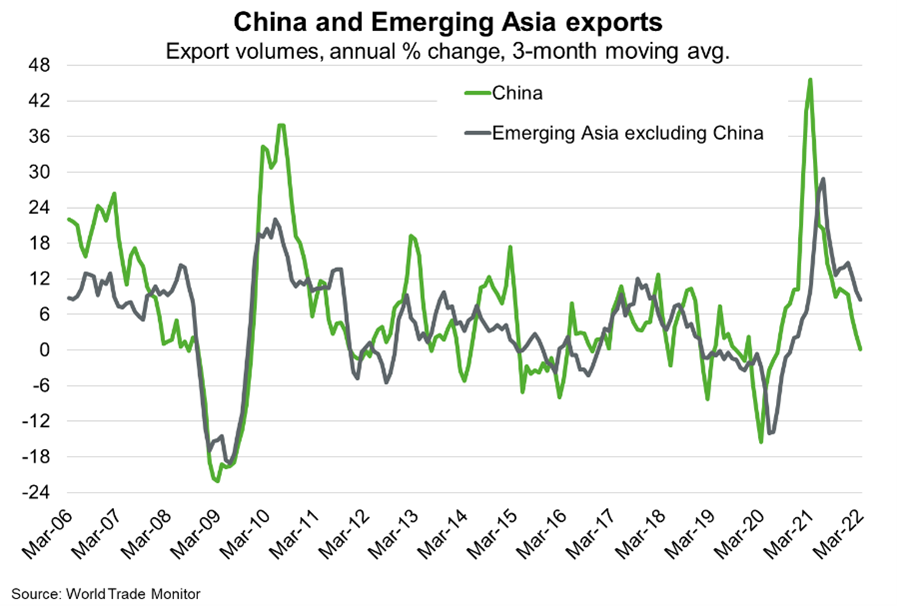Asia—Fading export engine hits economic recoveries
Merchandise exports—particularly electronics—have been a key growth driver for Asia since the onset of the pandemic. But the export engine is likely to fade amid tightening global financial conditions and the associated slowdown in global demand. Before the pandemic, East Asia and the Pacific sent 30% of exports to the US, Europe and Central Asia. However, the US is withdrawing policy stimulus amid strong inflationary pressures, thereby slowing consumer spending and business restocking, and Europe is suffering substantial spillovers from Russia’s invasion of Ukraine.
Exports have been boosting China’s economy at a time when domestic activity remains sluggish amid difficulties in the real estate sector and lockdowns to control COVID-19. Exports grew about 17% year on year in May, while industrial production increased just 0.7% year on year in May and fixed-asset investment slowed to 6.2% year-on-year over January-May 2022. But China’s economy could feel the pinch from lower export demand from the US and Europe, its two largest exports markets.
Amid lower demand from the US, Europe and China, alongside ongoing supply chain disruptions, merchandise exports volumes in Emerging Asia have begun to slow markedly (Chart). And, although many Asian countries have started to reopen or relax restrictions to their international borders, recovery in services exports—particularly tourism—is likely to be gradual. Meanwhile, rising interest rates and inflation will erode households’ purchasing power and add to the cost of doing business, hitting consumption and investment. Overall, the World Bank forecasts GDP growth in East Asia and the Pacific to slow to 4.4% in 2022 from 7.2% in 2021, and lower than the region’s 2010-19 pre-pandemic average of 5.1%. The weaker performance of Asia’s economies is negative for Australia’s export prospects: in 2020, Australia sent 76% of its goods and services exports to Asia.


